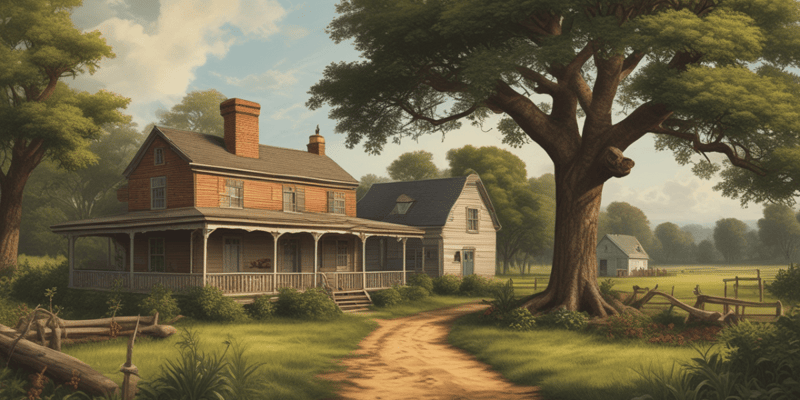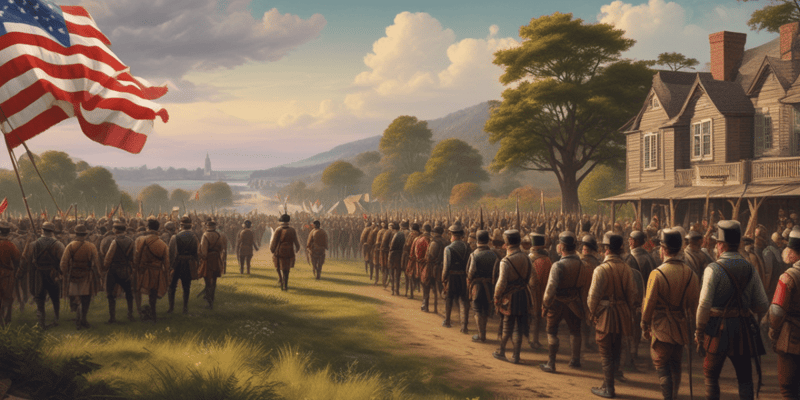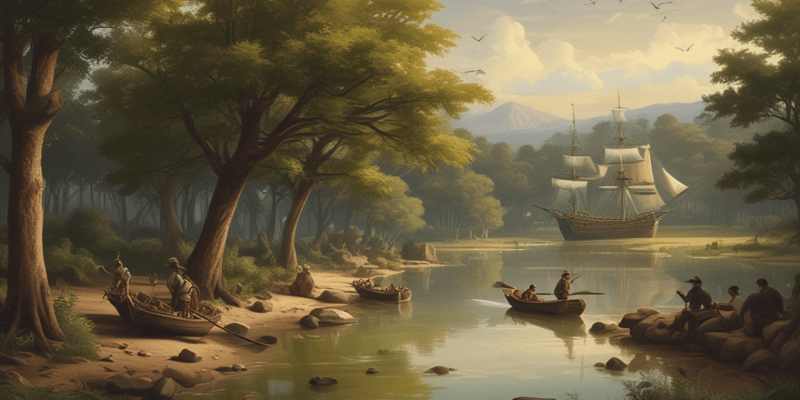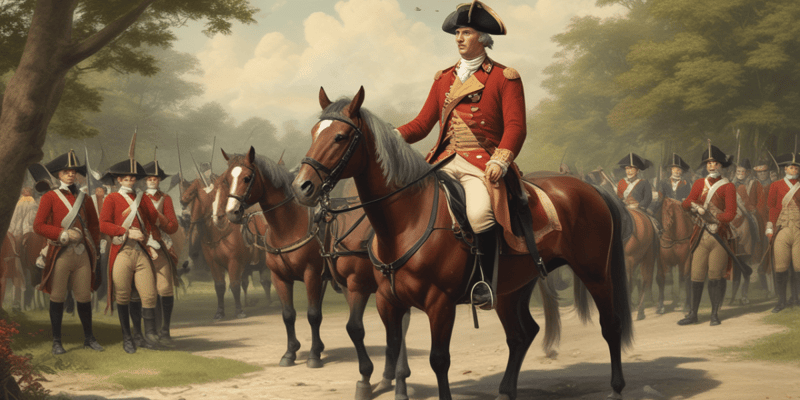20 Questions
What was the main factor that contributed to the rise of cotton plantations?
The invention of the cotton gin
What was the primary industry that slaves were involved in, in parts of Brazil and the Caribbean?
Sugar production
What was the purpose of the wind, water, or animal-driven mill in the sugar industry?
To extract juices from sugar cane
What was the significance of the sugar warehouses on Wall Street in New York?
They were used to store sugar
Why did plantation owners prefer to use slaves as workers?
Because they had no claim to the land
What was the significance of the White House in Washington, D.C.?
It was built by slaves
What was the Castillo de San Marcos Fort in Florida used for?
It was used as a fortress for the Spanish forces
What was the significance of the wall that slaves built in 1653 in New York?
It was used as the namesake for Wall Street
What was the significance of Georgetown University in Washington, D.C.?
It was founded by a slave owner
What was the primary reason for the division between the North and South in the 1600s?
The use of slaves in the South
What was the first major agricultural staple in South Carolina?
Rice
What was the approximate number of slaves required per plantation for rice plantations?
30-40
Which of the following was NOT a major crop grown on plantations?
Wheat
What was the primary reason for the growth in demand for slaves from Africa?
Rice plantations
What was the primary problem with the areas in which rice was grown?
They were unhealthy, wet, and swampy
What was the main reason rice plantations earned more money than tobacco plantations?
Rice was easier to grow
What was the result of the growth in the size of the plantations?
An increase in the demand for slaves
What was the relative size of tobacco plantations compared to sugar plantations?
Smaller
What was the main benefit of rice plantations to the economy of South Carolina?
It made Charleston one of the wealthiest cities in the world
What was the primary feature of the hydrological systems built by slaves on rice plantations?
Dams, levees, and sluices for rice fields
Study Notes
Types of Plantations
- Tobacco plantations: first plantation crop grown in the American colonies, smaller than sugar plantations, required 20-30 slaves
- Rice plantations: large, required at least 30 slaves per plantation, earned more money than tobacco, rice was easier to grow
- Cotton plantations: became popular due to great demand and invention of the cotton gin
- Sugar Cane: introduction of sugar changed the world, slaves worked in complex division of labor, including planting, harvesting, and manufacturing
Rice Plantations
- Grew in unhealthy, wet, and swampy areas, with diseases
- Made South Carolina the wealthiest of the 13 original colonies, and Charleston one of the wealthiest cities in the world
- Indigo, cotton, forest products, and cattle ranching never matched the wealth derived from rice plantations
Sugar Industry
- Dominated the economy in parts of Brazil and the Caribbean
- Slaves worked long hours under hot and dangerous tropical conditions
- Skilled slaves, such as carpenters, maintained the factory and equipment
Reasons for Using Slaves
- In the 1600s, America was divided into North and South, with the South needing many more workers
- White Americans in the South owned slaves, while those in the North did not, leading to the Civil War
- Plantation owners preferred workers who had no claim, leading to more crops and money
Buildings Built by Slaves
- The White House in Washington, D.C., built in 1792 and took 8 years to complete
- Harvard Law School in Massachusetts, built in 1817 and funded by a slave owner
- The US capital in Washington, D.C., took more than 30 years to build, from 1793 to 1826
- Castillo de San Marcos Fort in Florida, built in part by slaves and Native Americans for the Spanish forces
- Wall Street in New York, named after a wall built by slaves in 1653
- Georgetown University in Washington, D.C., built by slaves, with a descendant attending university
- Trinity Church in New York, built by slaves, with the architects hiring slaves for the work
- Mount Vernon in Virginia, built and maintained by slaves, with some freed in Washington's will
Learn about the different types of plantations in the American colonies, including tobacco, rice, cotton, and sugar cane, and their characteristics.
Make Your Own Quizzes and Flashcards
Convert your notes into interactive study material.
Get started for free



